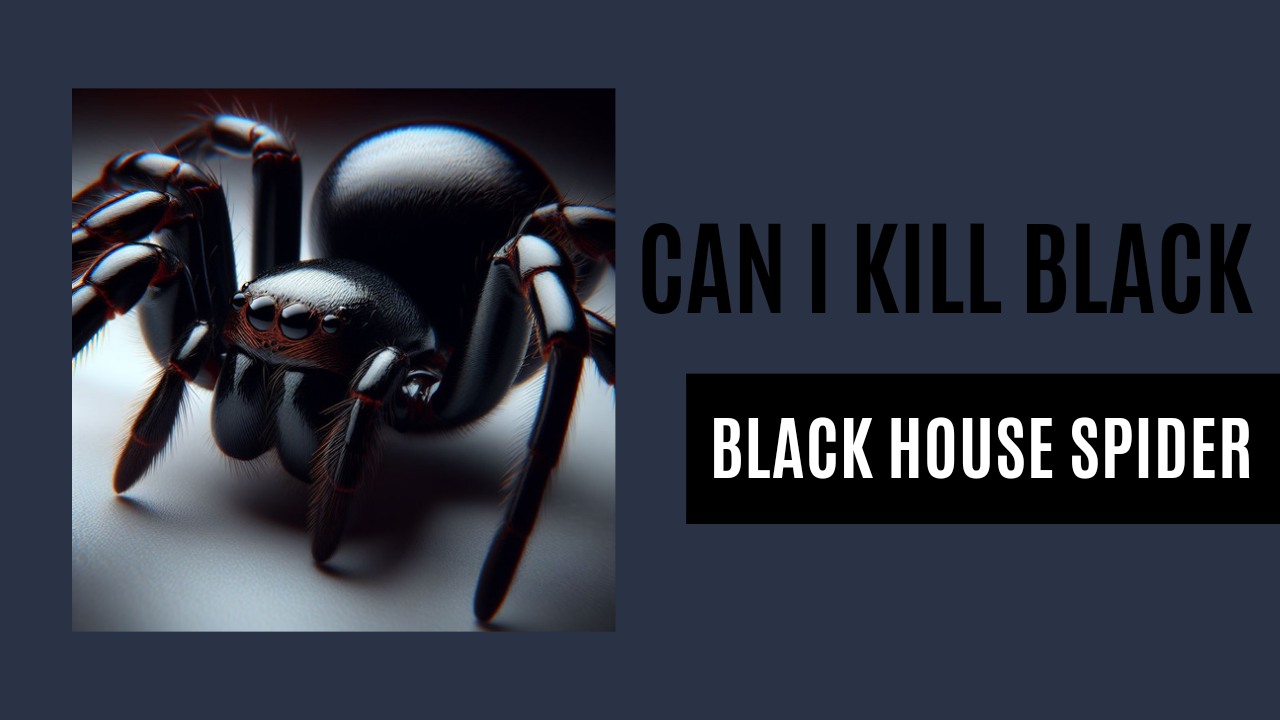“Can I kill Black House Spiders?” This question often arises in households, especially when encountering these common arachnids. The Black House Spider (Badumna insignis), a species that is common in metropolitan settings, especially in Australia, arouses curiosity as well as dread. We will examine some issues related to Black House Spiders in this detailed guide, such as identification, habitat, behavior, possible health hazards, and moral management techniques.
Identifying Black House Spiders: Characteristics and Habitats
To effectively manage Black House Spiders, identifying them correctly is crucial. Their dark coloring, which includes a charcoal grey abdomen with white markings and a carapace and legs ranging from dark brown to black, makes them distinctive. Females are usually larger, measuring between 14 and 15 mm on average.
Habitats: Where Do They Thrive?
These spiders favor sheltered areas such as window frames, gutters, brickwork, and even natural settings like rough-barked trees. Understanding their preferred habitats can aid in effective management and prevention strategies.
Understanding Their Diet and Lifecycle
Black house spiders are important members of the environment since they mostly eat other insects including ants, beetles, and flies. Their life cycle, which includes silk egg sac production and mating rituals, is an interesting facet of their behavior.
Addressing Health Concerns: Are Black House Spider Bites Dangerous?
Black House Spiders are generally not hostile toward humans, even though their bites can inflict pain and swelling, and their venom is not fatal. Understanding this can alleviate unnecessary fear and promote more humane management methods.
Ethical Management: Alternatives to Killing
Humane Removal Techniques
- Gentle Relocation: Safely capturing and relocating these spiders to an outdoor environment is a compassionate approach.
- Preventive Measures: Seal entry points and maintain cleanliness to deter spiders from entering.
DIY Solutions: Natural Repellents and Spider-Proofing
- Natural Repellents: Utilize household items to create effective spider deterrents.
- Spider-Proofing Your Home: Regularly inspect and maintain areas where spiders are likely to inhabit.
Professional Spider Management
When DIY methods aren’t enough, professional pest control can offer safe and ethical solutions, prioritizing humane treatment and environmental conservation.
The Role of Black House Spiders in Our Ecosystem
Acknowledging Black House Spiders’ ecological function in managing pest populations can help us go from fear to appreciation and promote a more peaceful relationship.
Conclusion:
In conclusion, considering the ecological importance of Black House Spiders and their generally unnoticed attitude, it is reasonable to wonder if killing them is appropriate. However, investigating humane management techniques is both responsible and beneficial. With any luck, this book will provide you with the information and resources you need to make wise choices and live in safety and civility with these amazing animals.

[…] to clear the air on spider myths. Spiders aren’t the villains some make them out to be. Let’s focus on the real, amazing facts about these beneficial […]